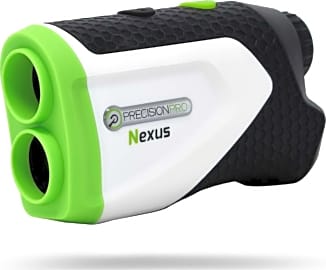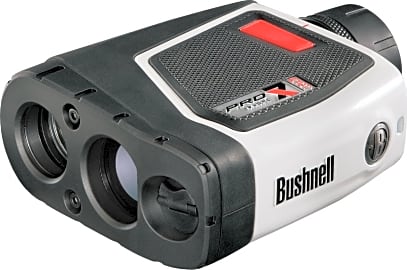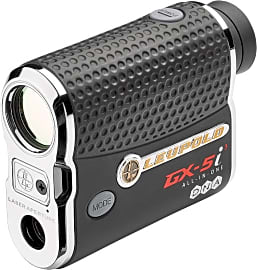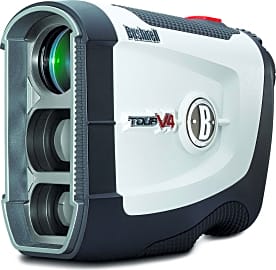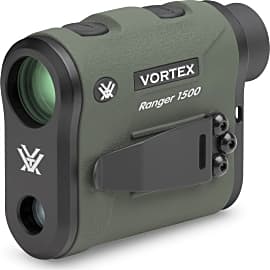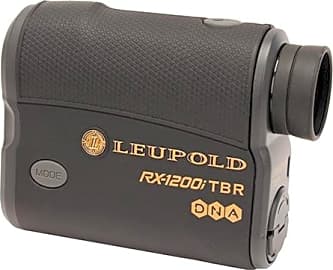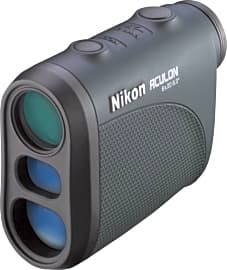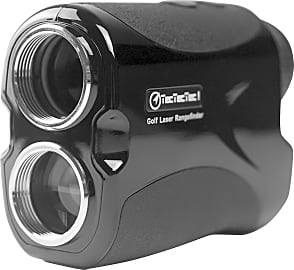The 10 Best Laser Rangefinders

This wiki has been updated 45 times since it was first published in March of 2015. If you're determined to get your handicap down or improve your shooting accuracy by using every tool available, you'll want to pack one of these handy laser rangefinders into your bag next time you head for the golf course or firing range. They quickly provide an exact distance measurement, so you know how far it is to the hole or target. We've included a variety of models to suit every budget. When users buy our independently chosen editorial choices, we may earn commissions to help fund the Wiki.
Editor's Notes
April 23, 2019:
Hunters and golfers have different requirements for their laser rangefinders, so it is important to choose a model best-suited to your needs. For example, while the majority of golfers may leave the course early if it starts to rain, hunters often don't have the luxury, so they should choose a water-resistant model, like the Vortex Optics Ranger or TecTecTec VPro500. The Leica Rangemaster CRF 1600-B and Leupold RX-1200i Tbr offer true ballistic range, which make them very useful for anyone shooting over uneven terrain. For golfers, the ability to compensate for slopes when determining yardage to a hole can be very helpful and is a great aid when practicing. Unfortunately, it isn't allowed in tournament play, so most professional players would do well to choose a model that allows slope to be turned off, such as the Nikon Coolshot Pro Stabilized or Leupold Gx 5I3. Both the Bushnell Pro X7 Jolt and Bushnell Tour V4 Jolt provide tactile feedback when they have locked onto a flag, minimizing the chances of getting an inaccurate reading. Since we realize that recreational golfers won't want to spend an arm and a leg on a rangefinder, we also included the budget-friendly Precision Pro Golf Nexus, which has a surprising amount of features considering the low cost.
What Is A Laser Range Finder And Who Needs Them?
Hunters and military members benefit from models that determine whether or not an object is moving, and at what speed.
A laser rangefinder is a device that measures distance and other characteristics of an object through the use of a laser. It does this by using the time of flight principle; the rangefinder sends a laser pulse in a narrow beam to a target, and based on the amount of time it takes to reflect off of the target and return, the distance can be obtained. Laser rangefinders are popular among hunters, in various sports, and with military personnel.
Some models provide feedback on shot clearance, so the user can be certain nothing will get in the way of their target. This can be especially important for military personnel, since they use their rangefinder in life or death matters, and cannot afford to shoot the wrong target. Some also have high definition optics, allowing the user to examine their target close-up on a small screen. Hunters and military members benefit from models that determine whether or not an object is moving, and at what speed.
Individuals who use a bow and arrow need a model with built-in incline/decline technology. This will take different shooting angles into account when calculating distance. Night hunters need a laser rangefinder with a display screen that is adjustable to various light conditions. Some act like night vision devices, with brightness control technology that offers ocular contrast, changing with the surrounding light conditions.
The History Of Range Finders
The very first rangefinder was called a micrometer. A man named James Watt invented it in 1769 and his version was made up of two parallel hairs that sat inside the focal plane of a telescope eyepiece. A man named Alexander Selligue is sometimes credited with the invention of the range meter, and while he did develop the model that became popular among the masses, he isn’t the original inventor.
The devices became especially important when humans started rocket and aviation research, as well as space exploration.
In 1781 Georg Friedrich Brander made the coincidence telemeter. This involved two mirrors positioned horizontally that made two images in the same eyepiece. Regardless of who historians believe invented the very first rangefinder, most agree that it originated in the steam age. But by the late 19th century, electrical engineers were applying the term rangefinder to devices they used to measure different quantities.
Several very different devices were labeled rangefinders at one point, including a resistance thermometer, which is used to measure temperature, and an electrical strain gauge, which determines the amount of strain on an object. Because the term rangefinder was being so widely used, and its meaning had become blurred, the Institution of Civil Engineers suggested it be replaced with the word tachometer.
In World War II, the boom in industrial development made tachometers commercially viable. The devices became especially important when humans started rocket and aviation research, as well as space exploration. Since space crafts can lose contact with radio or electromagnetic waves, rangefinders used to be one of the only ways for people on the ground to measure the parameters of the vehicle. Rangefinders also played a role in the history of espionage. American spies during the Cold War used them to determine the locations of Soviet missile tests.
Tips For A Better Hunting Trip
Hunters can make the most of their laser rangefinders if they supplement them with clever tactics. If a hunter is still waiting to spot an animal, they should clear the area where they’re standing of any debris or clutter. That way, if they need to make a small movement to reposition their gun or laser rangefinder, they won’t make a large noise that could scare away the prey.
A smart hunter can get ahead of everyone, and benefit from the work that others put in.
Once a hunter has found a place to wait for an animal, they should practice shooting positions for every direction from which an animal might approach. This helps them see if there are any unnoticed branches or other items in the way of their shot, so they can clear those ahead of time.
It’s important to make as little noise as possible. The best way to move is in quick spurts, broken up by long pauses. Should a hunter move too consistently, it’s easy for an animal to get a sense of their position and the direction in which they’re headed. If one should lose sight of a a shot animal they were tracking, they should make a mental note of exactly where it stood the last time they saw it. Getting to that place is the only way to pick up the blood trail.
Since most hunting trails are gated to restrict vehicle access, hunters often park their cars at the start of a trail early in the morning and walk the remainder of the way. A smart hunter can get ahead of everyone, and benefit from the work that others put in. If one arrives in the middle of the night and hikes to the end of a hunting trail, they can camp overnight. By the next morning, the other hunters will have started sending animals in the direction of the camper, who can be ready with their gun at the end of the road.


